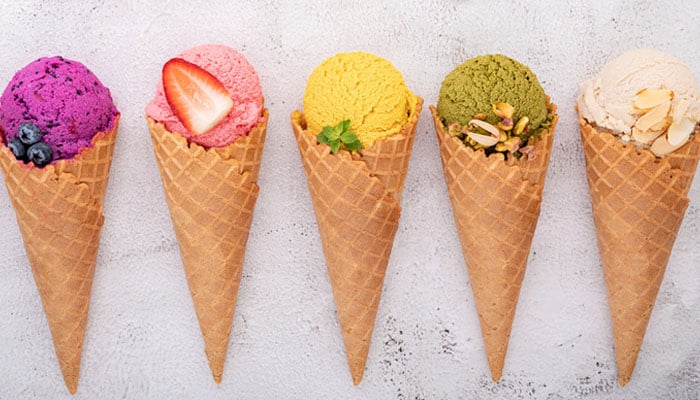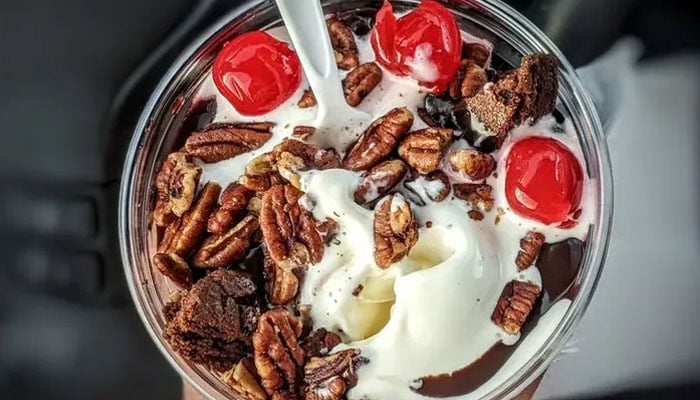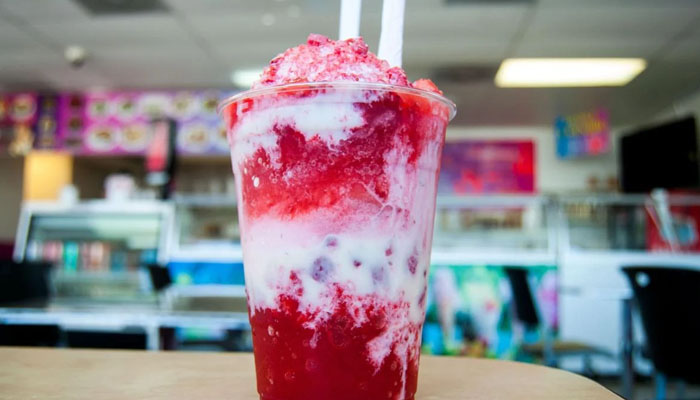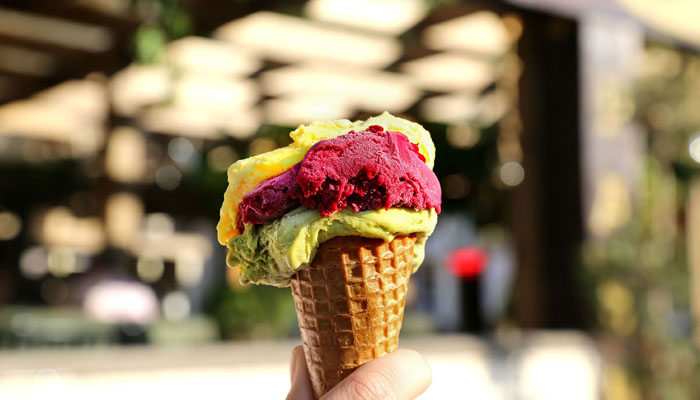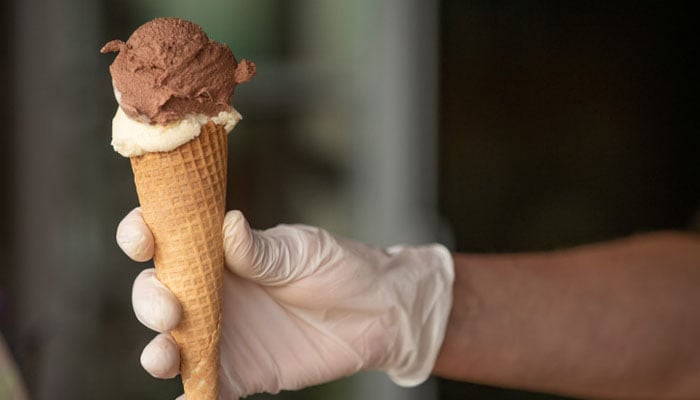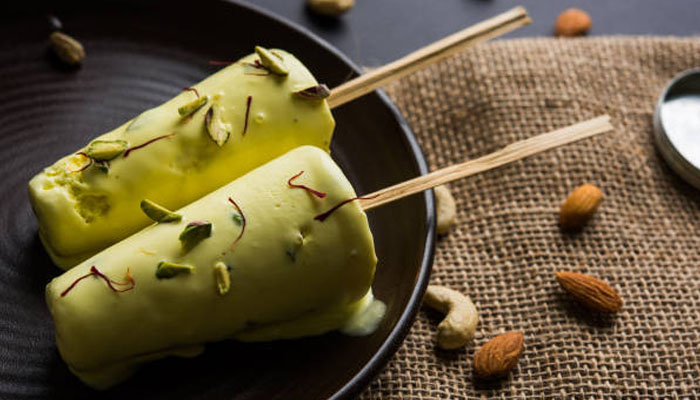If you have to choose from world's top 10 ice creams, which one would you pick?
From Asia to Europe, US to South America, it's safe to affirm this frozen delicacy holds special place in people's hearts
It's safe to assume that ice cream tends to be a favourite indulgence for everyone of any age, whether they are in Asia, Europe, the United States, or South America.
As the sweltering summer heat intensifies, a question arises there is no one is there in the world who doesn't relish the delights of ice cream.
Cities like San Francisco and New York even boast hubs of the immensely popular Museum of Ice Cream, vast spaces dedicated to celebrating this sweet and refreshing treat.
Tracing back to culinary history, the origins of ice cream can be traced back to the second century BCE. Even Alexander the Great of Greece displayed a fondness for snow and ice combined with honey and nectar. Similarly, Emperor Nero of Rome took pleasure in snow infused with fruits and juices.
Over a millennium later, Marco Polo introduced a recipe akin to sherbet from the Far East to Italy, which gradually transformed into the ice cream familiar to most of us today. While the allure of ice cream transcends boundaries, many countries have tailored their own renditions.
Jeni Britton Bauer, the visionary behind Jeni's Splendid Ice Creams, notes that each culture offers a unique take on ice cream, often known by distinct names. She comments, "Ice cream, or its equivalent, exists in every culture. It's a unifying food – something you savor at a local ice cream parlor or from a street vendor's cart."
The act of consuming ice cream is an engaging and tactile experience, adds Britton Bauer. "The initial bite jolts you awake with its coldness, demanding constant attention to prevent its melting," she observes.
From frozen custard in the United States to kulfi in India, embark on a journey to explore ice cream varieties worldwide and reconnect with your inner child.
United States: Frozen Custard
Soft-serve frozen custard stands as the archetypal American ice cream, according to Bruce Weinstein, the author of the comprehensive compendium "The Ultimate Ice Cream Book," encompassing a staggering array of 500 diverse recipes.
Diverging from frozen yoghurt, which hinges on cultured yoghurt and sugar, frozen custard marries milk, cream, sugar, and egg yolks. Moreover, it commonly incorporates a thickening agent, notes Weinstein.
Although traditional American ice cream sometimes incorporates egg yolks, the defining distinction between frozen custard and ice cream lies in texture: custard exhibits a dense quality due to its preparation method that avoids air incorporation into the ingredients.
Conversely, ice cream machines infuse air into the mix, yielding a fluffier and lighter final product in contrast to custard.
In terms of flavours, Americans typically have the choice between classic vanilla or chocolate, or they can opt for a swirl, amalgamating both flavours. As Weinstein elucidates, "You can roll your custard in sprinkles or dip it into red or chocolate syrup, which rapidly solidifies into a crisp shell."
Popular venues such as Dairy Queen, Culver's in the Midwest, and Carvel offer a fix for frozen custard enthusiasts in the US.
Mexico: Raspado
Visualize raspados as Mexico's rendition of American snow cones, with a distinctive twist. While snow cones drench ice in sugary syrup, raspados incorporate real fruits or freshly squeezed fruit juices. The creation of raspados is considered an artisanal craft.
This delightful and cooling concoction pervades the entirety of Mexico, readily available from street vendors' carts, as highlighted by Lillian Aviles, a Mexico City-based authority on Mexican culture. She remarks, "These carts vend an array of fruit-based flavors such as tamarind, lime, pineapple, orange, and mango. Additionally, non-fruit variations such as vanilla and rompope, akin to eggnog, are on offer."
In various Mexican markets, Aviles elucidates, vendors concoct a fusion of a raspado and a milkshake termed "eskimo," blending milk, condensed milk, seasonal fruits, sugar, vanilla, and shaved ice.
Distinct regions in Mexico contribute their unique takes on raspados. For instance, the coastal town of La Paz boasts the ice cream parlour La Fuente, situated along the esplanade by the waterfront, serving raspados crowned with a dollop of ice cream, often featuring its signature orange yoghurt flavour.
Mexicans tend to eschew consuming their raspados in cones, as Aviles explains – these icy delights are exclusively presented in cups.
Italy: Gelato
Beyond pasta, gelato assumes the mantle of Italy's culinary emblem, constituting an integral facet of daily life for Italians.
As Jeni Britton Bauer notes, "Italians congregate at gelaterias, using them as social hubs and cultural landmarks."
Compared to traditional ice cream, Italian gelato boasts a lower fat content, says Weinstein. It's concocted with whole milk, eggs, sugar, and flavourings, encompassing beloved variations such as chocolate, hazelnut, pistachio, stracciatella, or vanilla combined with chocolate shards.
Weinstein emphasises, "Replicating authentic Italian gelato in the US is a challenge due to our milk's relatively lower fat content. Hence, we often introduce cream into the mixture."
Distinct from the conventional ice cream scoop, Italian gelato is served with a spatula and expertly pressed into cups or cones.
Throughout Italy, intense debates rage regarding the premier gelateria in each town, notes Luca Finardi, the general manager of Milan's Mandarin Oriental. He reveals, "Every one of us has our preferred gelateria." Finardi's personal favourite in Milan is Massimo Del Gelato, near Chinatown, renowned for its chocolate-based flavours like chocolate cherry and chocolate cinnamon, crafted fresh daily.
France: Crème Glace
Resembling gelato in appearance and texture, crème glace or French ice cream embodies a greater richness than its Italian counterpart, as outlined by Weinstein.
"Glace strikes a harmonious balance between American frozen custard and gelato, predominantly incorporating cream and eggs," he said. Undoubtedly, salted caramel stands out as its most iconic flavour.
Historically, the still-operational Parisian eatery Le Procope, established by an Italian immigrant in the late 17th century, introduced ice cream to France. While the restaurant remains renowned for its savoury offerings, it's retained a legacy of glaces.
Modern-day France witnesses an abundance of family-run speciality ice cream shops sprinkled across the nation, where artisans craft frozen desserts using the purest dairy alongside top-tier fruits, nuts, and chocolate.
Notable establishments include Berthillon in Paris, perpetually popular for its gianduja or hazelnut glace. The Fenocchio Glacier in Nice, another beloved name, ventures into more unconventional ice cream flavours such as white chocolate, coffee, olive, chewing gum, and pink pepper-infused vanilla.
Turkey: Dondurma
An ice cream that defies melting? That's precisely what dondurma, or Turkish ice cream embodies. It's often dubbed Maras dondurma, a nod to its place of origin in the Mediterranean city of Maras in Turkey.
Karen Fedorko Sefer, Istanbul resident and founder of Sea Song Tours, paints a vivid picture of dondurma's unique attributes. Sporting an elastic consistency, dondurma melds goat milk, sugar, and salap – the pulp extracted from a purple orchid. Notably, it frequently incorporates mastic, a resin with a pine-like flavour sourced from mastic trees.
"Dondurma purchase is akin to a spectacle," Fedorko Sefer elaborates. Vendors don traditional Turkish garb, complete with a sultan's hat, theatrically stretching, twisting, and turning the ice cream before depositing it into a cone. The display delights both kids and adults alike.
Turkish locals procure dondurma from street carts or bazaars, with dedicated shops being a rarity, as Fedorko Sefer clarifies. An exception, established in 1969, is Ali Usta in Istanbul's Moda neighbourhood, celebrated for offerings like hazelnut, walnut, and melon. However, brace for a queue, particularly during the summer months.
Japan: Kakigori
Kakigori is no ordinary snow cone. "True kakigori boasts finely shaved ice that dissolves in your mouth, akin to creamy ice cream," describes Sakura Yagi, COO of TIC Restaurant Group, overseeing Japanese restaurants like Cha An Tea House in Manhattan's East Village, renowned for its house-made kakigori.
Pastry maestros craft kakigori by meticulously shaving ice from blocks until it accumulates into a fluffy mound. Subsequently, handcrafted syrups, often employing high-quality ingredients, are drizzled onto the ice, yielding flavours like green tea, strawberry, grape, and melon.
Kakigori occasionally incorporates condensed or evaporated milk and is consistently presented in bowls. Toppings, such as red bean paste or fresh fruit, provide a final flourish, a common practice in sweet shops throughout Japan.
Yagi underscores the allure of kakigori's simplicity, affirming that it's cherished by the Japanese populace during the summer months, particularly savouring the latest in-season flavours.
India: Kulfi
Kulfi, India's traditional ice cream, traces its origins back to the 16th century and could very well be among the world's most decadent frozen desserts, according to Indian food writer Camellia Panjabi.
Given its principal ingredient – sweetened evaporated milk – the opulent nature of kulfi comes as no surprise.
Panjabi elaborates, "In the process of making kulfi, milk is boiled down, leading to caramelization, yielding an indulgently rich ice cream. Post-boiling, flavors like saffron threads, crushed pistachios, or crushed almonds are introduced."
While the core essence of kulfi remains consistent across iterations, the past few decades have seen an expansion in its repertoire, notes Panjabi. Kulfi shops across India, as well as stalls along Mumbai's Chowpatty Beach and Indian eateries globally, showcase diverse offerings, spanning orange, banana, chocolate, mango, and seasonal berry kulfis.
Kulfi further distinguishes itself by being moulded into elongated popsicles or cones prior to freezing, imparting a distinct appearance to this sumptuous treat.
Jeni Britton Bauer, having sampled kulfi in the United States, describes it as exceptionally sweet and reminiscent of honey in texture.
-
Global markets on edge over Greenland dispute: Is US economic leadership at risk?
-
UK inflation unexpectedly rises to 3.4% in December, the first increase in five months
-
Trump vows ‘no going back’ on Greenland ahead of Davos visit
-
Japan’s ex-PM Shinzo Abe’s killer is set to be sentenced: How much punishment could he face?
-
Therapist killed in office as former client launches knife attack
-
North Carolina woman accused of serving victims with poisoned drinks
-
'Greenland will stay Greenland', former Trump adviser hints at new twist
-
Stranger knocks, then opens fire on Indiana judge and wife
